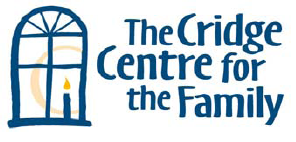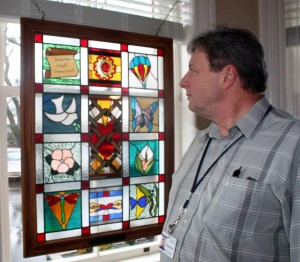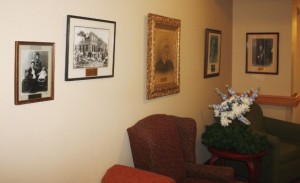 The Cridge Centre for the Family, in Victoria, was founded in 1873, and is the longest serving non-profit society in British Columbia. It provides social services and care to people of all ages, in the Greater Victoria community and beyond. How is it that The Cridge has continued to innovate, and remain a vital part of the community, for so long?
The Cridge Centre for the Family, in Victoria, was founded in 1873, and is the longest serving non-profit society in British Columbia. It provides social services and care to people of all ages, in the Greater Victoria community and beyond. How is it that The Cridge has continued to innovate, and remain a vital part of the community, for so long?
Curious, I got together with Greg Hatton, Cridge’s Manager of Communication and Fund Development. I first met Greg at a recent local business networking event, and during our conversation it quickly dawned on my how little I knew about the Cridge. Last week we re-connected over lunch in the Cridge’s Seniors Assisted Living dining area (on the most popular of lunch days, Fish ‘n’ Chips thanks for arranging that one Greg!). We followed that with Greg leading me in a walking/talking tour of the main Cridge facilities, located on a 12 acre parcel of land in central Victoria.
A bit more Cridge context
Edward Cridge came to Victoria as Chaplain of the Hudson’s Bay Company in 1855. He is sometimes described as Victoria’s first social worker. He was anti-racist, and a champion of education. Along with his wife Mary, he pioneered many social and cultural causes; including the Royal Jubilee Hospital, and the BC Protestant Orphan’s Home (1873). He became a bishop of the Reformed Episcopal Church in 1875. Mary Cridge died in 1905; Edward Cridge died in 1913 at the age of 96.
In the 1960’s the BC Protestant Orphan’s Home was renamed to The Cridge Centre for the Family, and a whole new set of programs implemented. Today, in addition to the seniors residence & services, the Cridge provides transitional housing & related dovetail services, a transition house for women, respite & respitality services, a brain injury residence & services, and child care facility & services. All of this is supported by 90 full-time, 50 part-time, and 100+ volunteers. Whew!
Staying innovative
Here’s a few observations I have, related to The Cridge, their longevity, and success. (In truth, some of these observations germinated out of my previous post on innovative teams).
Culture. Culture trumps just about everything else when it comes to being a key to innovation. When people feel cared for, and confident, it frees them to generate great ideas and innovate. Certainly caring is no small part of The Cridge culture.
Sustainability. Sustainability is linked to long-term relationships. Community partnerships, management stability, and long-time supporters are all part of The Cridge experience.
Structure. Having autonomy and accountability, within some set boundaries/structure, supports collaboration and innovation. The Cridge model of multiple, autonomous, programs, operating within the confines of an organization plan/budget, is successful.
Balance. The Cridge balances creating a warm, sensitive, and caring environment with a strong business orientation; e.g., fundraising, and building community partnerships.
Diversity. Life evolves. Situations change. Having diverse paths and options at your disposal ups the odds of survival! Diversity abounds at The Cridge; e.g., in the range of programs and services, community networks, and supporters.
Physical environment. A physical environment that is welcoming, and where you feel like you belong, makes it easier to work together, create, and innovate! From what I saw in The Cridge Seniors and Child Care buildings, they fit the bill; comfy lounges, a range of gathering spaces, for work and/or play, a family feel, Buildings are renovated with historical preservation in mind.
Attitude. Positive attitudes (for moving things forward) such as a mentality of abundance, recognizing the gifts we each have, and laughter, are present at The Cridge.
Trust. If sustainability as an organization is based on long-term relationships, then those relationships are built on trust. Cridge trust is recognized formally (The Cridge is accredited by both Imagine Canada and Canadian Council of Christian Charities) and gained through less formal channels (e.g., through collaborative problem-solving involving a tenant, and their family/supporters).
Wrapping up
In part, I think I answered the question about Cridge longevity. And, yet I humbly suspect there is a whole lot more to the story. Your thoughts?
For more information about The Cridge, I suggest you check out their website, including the recent newsletter.
If you enjoyed this post, please consider leaving a comment or subscribing to my blog. Always appreciated, Ben.




Great thinking about globalization.I appreciate with your blog also .Thanks
I found your blog on Google and read a few of your other posts. Keep up the good work. Look forward to reading more from you in the future.
Great article – Could not agree more that it is the commitment to the creation and maintenance of a caring culture is really important to sustaining innovation. At Living Well – Assisted Living at Home, a California company that combines high tech with high touch to provide comprehensive and one-stop services for elders who wish to remain in their homes, we found that creating the Living Well culture, and training and reinforcing our culture throughout our organization is vital to our success.
Thanks for the article!
Tessa ten Tusscher, PhD
CEO – Living Well – Assisted Living at Home
Tessa, thanks for your comment. It’s very important work you are doing – helping elderly people stay in their own homes, and them feeling good about it. And, by the way you talk about the role of culture in your organization, Living Well- will be around for some time, providing that service, and to a growing market (if it’s anything like here in Canada!).
Assisted Living for Elderly & Assisted Living Place, thanks for checking in, and I look forward to connecting with you in the future re: shared, global interests.
Useful information like this one must be kept and maintained so I will put this one on my bookmark list! Thanks for this wonderful post and hoping to post more of this!
I like it – good article, good information, Enjoyed your post greatly! Great write up! Need more like it! Wish to hear more like this! Your article was very interesting. Thank You.